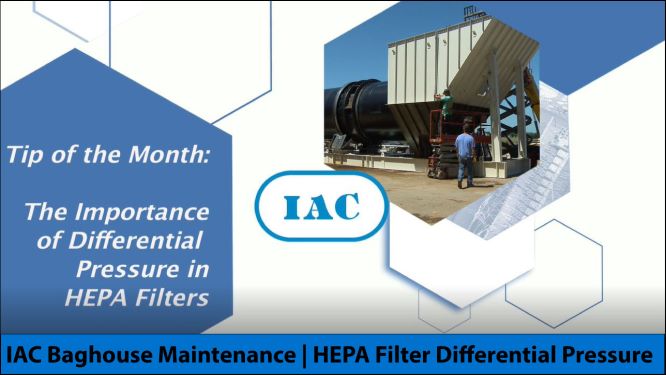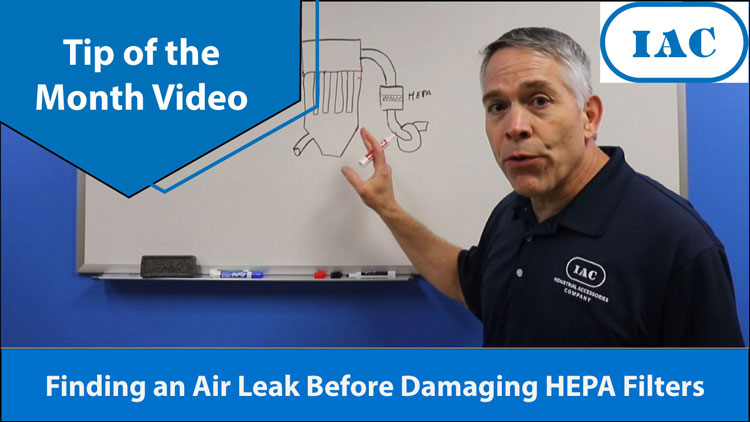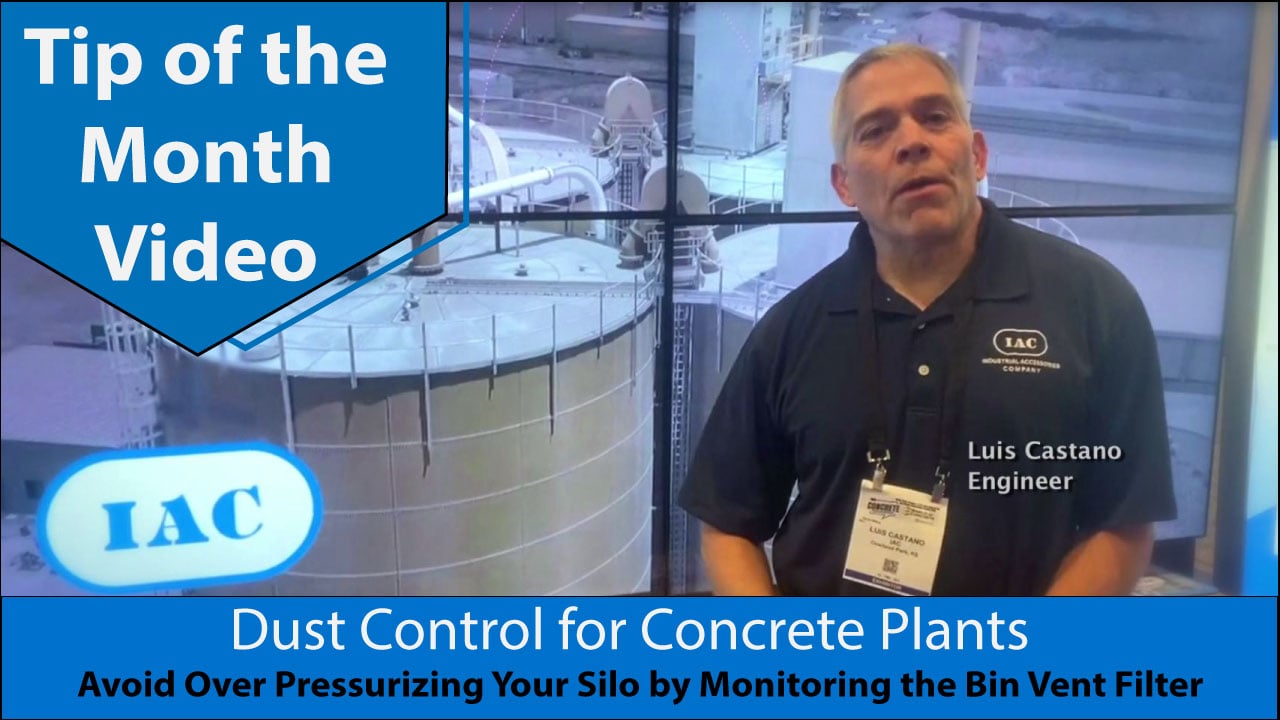Importance of Differential Pressure in HEPA Filters

In our newest Tip of the Month Video, IAC Engineer Luis Castano addresses the importance of monitoring the differential pressure on the HEPA Filters, the secondary filtration system. Excessive dust build-up on the HEPA Filters can be a warning of potential problems with the Baghouse. Watch the video to learn about what to look out for and watch more IAC Videos at on YouTube Page.
HEPA Filter Differential Pressure Video Transcript:
Hi, my name is Luis Castano with IAC’s tip-of-the-month. This time we want to talk about the importance of differential pressure, which is a subject we have discussed before. Everybody talks about it, and even knows about it, but we run into situations where a ventilation system is addressing toxic dusts, and on those systems, we don’t just need the baghouse with membrane filter bags, there’s also a secondary filter, which is a HEPA filter for high efficiency filtration, so that we never exhaust emissions into the atmosphere.
The HEPA filter becomes part of the system, and it is very important to keep an eye on the HEPA filter with differential pressure. The main differential pressure is on the baghouse, which tells us if the baghouse is in good shape. We also want to monitor nearby the differential pressure on the HEPA filter because that will tell us if the HEPA filter is in good shape.
If the differential pressure on the HEPA filter is anywhere beyond 2”, it’s telling us it’s building up dust. If it builds up dust, then we have a problem in the baghouse, even if the differential pressure on the baghouse is acceptable.
Just be aware that monitoring differential pressure on the HEPA filter is just as important as a warning to a potential problem on the baghouse. Both of them need to be monitored, and we always recommend having them accessible at ground level for easy monitoring. 4” to 5” on the baghouse is a good number; on the HEPA filter it’s always less than 2” of water column.
If you have any questions, or would like to discuss this in more detail, please don’t hesitate to talk with one of IAC’s engineers. Thank you!



